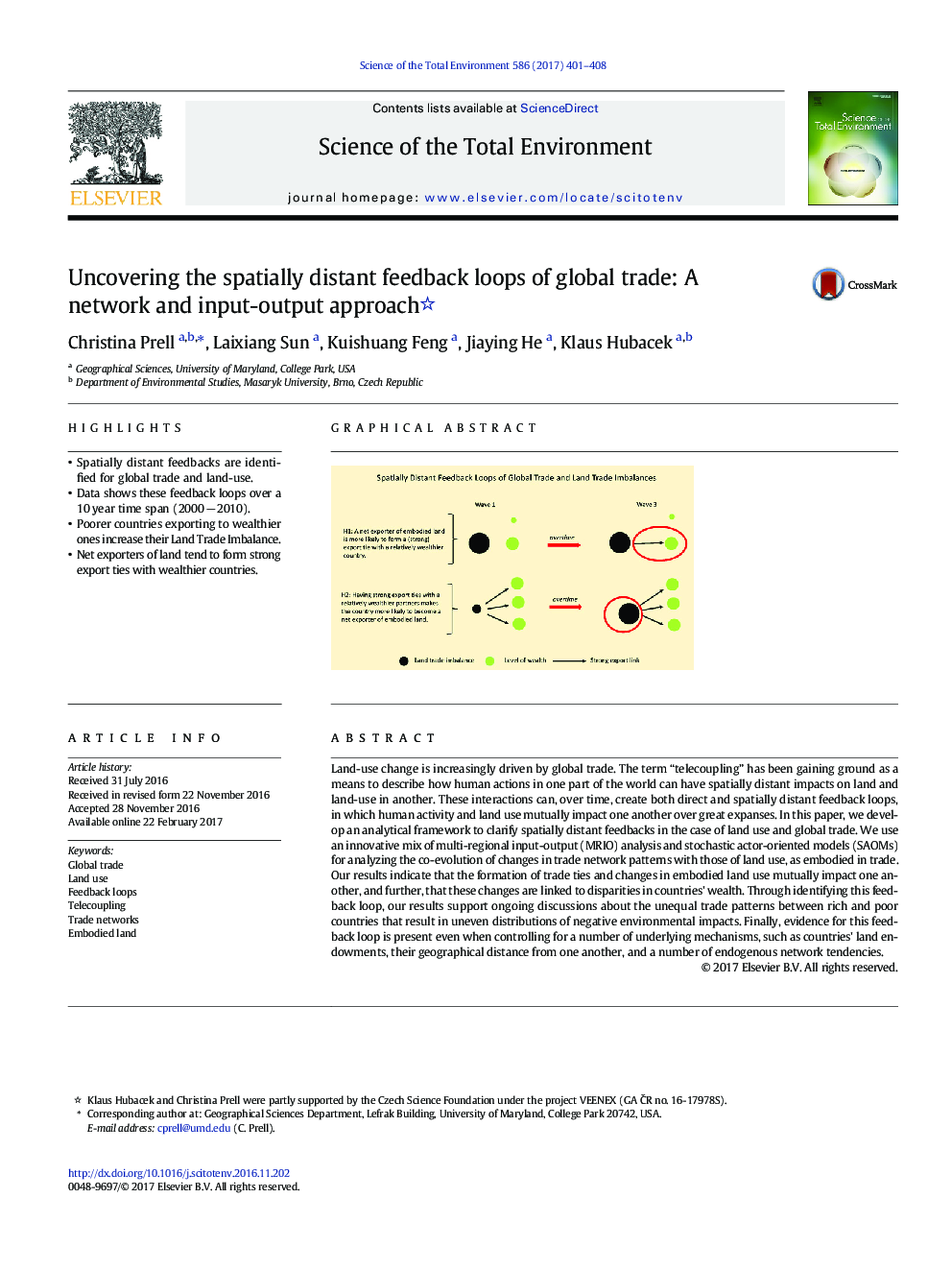| Article ID | Journal | Published Year | Pages | File Type |
|---|---|---|---|---|
| 5751135 | Science of The Total Environment | 2017 | 8 Pages |
â¢Spatially distant feedbacks are identified for global trade and land-use.â¢Data shows these feedback loops over a 10 year time span (2000 â 2010).â¢Poorer countries exporting to wealthier ones increase their Land Trade Imbalance.â¢Net exporters of land tend to form strong export ties with wealthier countries.
Land-use change is increasingly driven by global trade. The term “telecoupling” has been gaining ground as a means to describe how human actions in one part of the world can have spatially distant impacts on land and land-use in another. These interactions can, over time, create both direct and spatially distant feedback loops, in which human activity and land use mutually impact one another over great expanses. In this paper, we develop an analytical framework to clarify spatially distant feedbacks in the case of land use and global trade. We use an innovative mix of multi-regional input-output (MRIO) analysis and stochastic actor-oriented models (SAOMs) for analyzing the co-evolution of changes in trade network patterns with those of land use, as embodied in trade. Our results indicate that the formation of trade ties and changes in embodied land use mutually impact one another, and further, that these changes are linked to disparities in countries' wealth. Through identifying this feedback loop, our results support ongoing discussions about the unequal trade patterns between rich and poor countries that result in uneven distributions of negative environmental impacts. Finally, evidence for this feedback loop is present even when controlling for a number of underlying mechanisms, such as countries' land endowments, their geographical distance from one another, and a number of endogenous network tendencies.
Graphical abstractDownload high-res image (177KB)Download full-size image
